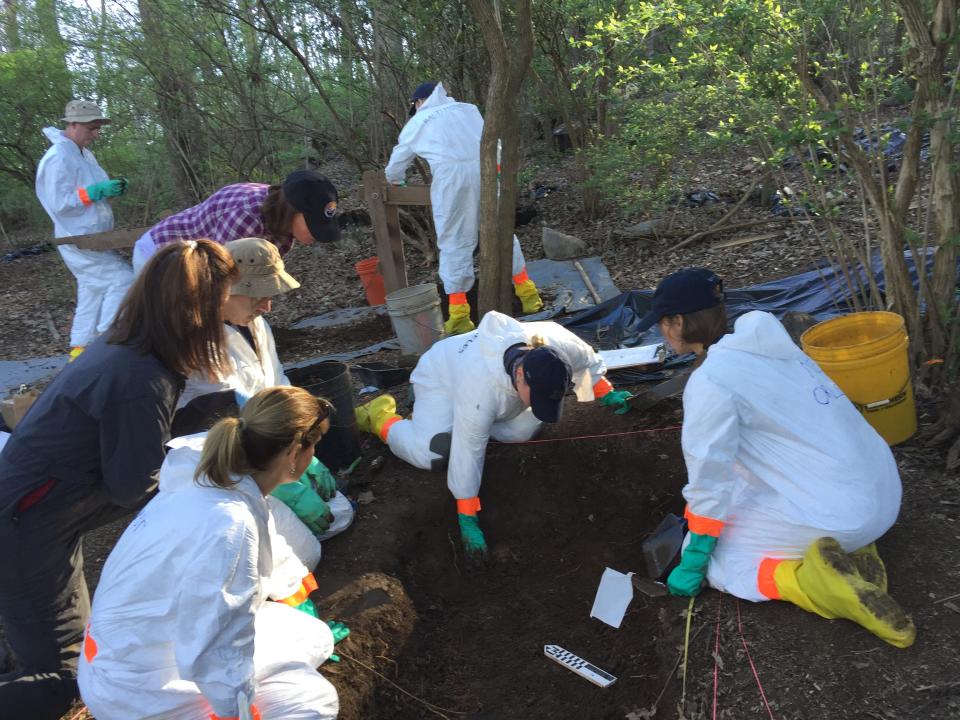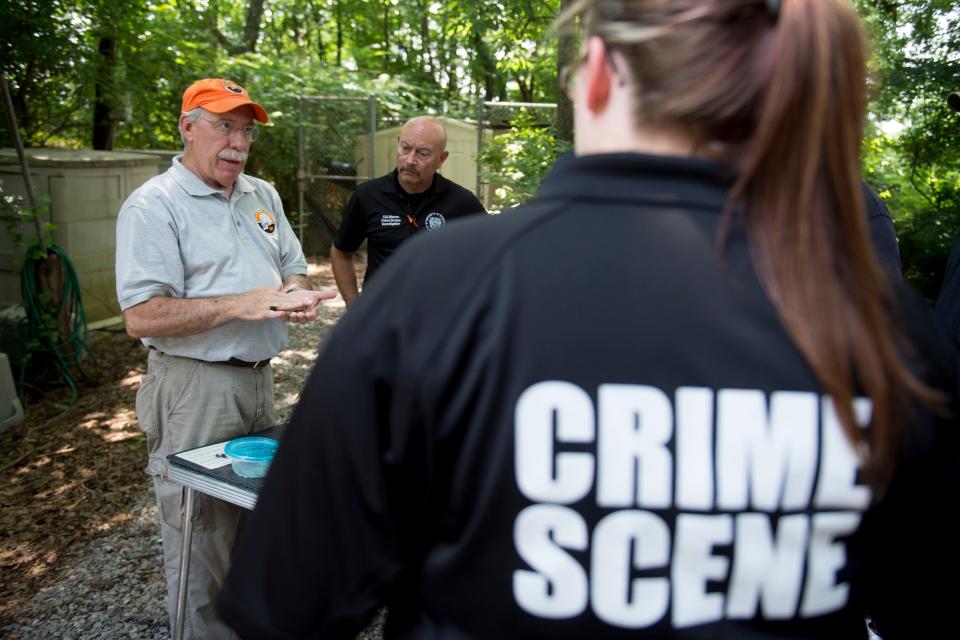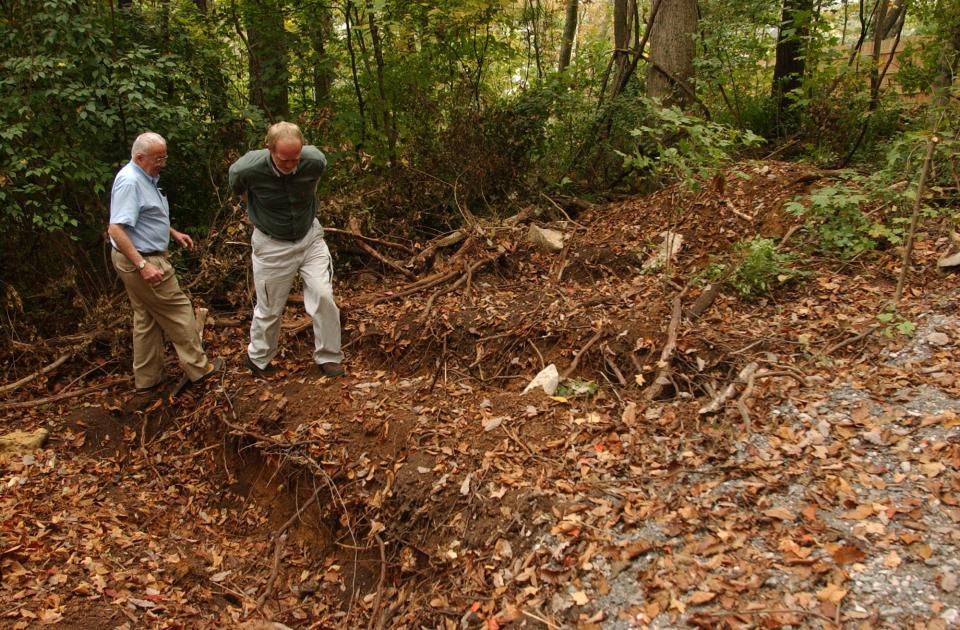University of Tennessee has a Body Farm, but what actually happens there? | Know Your Knox
- Oops!Something went wrong.Please try again later.
In 1994, when Patricia Cornwell published her best-selling mystery novel "The Body Farm," few people outside Tennessee had ever heard the term, let alone knew what a "body farm" was.
The Body Farm − the name commonly used for the University of Tennessee's Anthropology Research Facility − was the first of its kind to permit systematic study of human decomposition and had been in existence for just 13 years.
The facility initially wasn't greeted with public approval, sparking a brief protest in Knoxville in 1985 when the public discovered that human remains were being studied there.
"A curious child could get in there and see the bodies and have nightmares for months," one protester complained to a Knoxville News Sentinel reporter. "Moreover, who is to say a fly won't go from here to your sandwich?"
These days, of course, UT's Body Farm has been enshrined in the public's imagination, and not just as the location where Cornwell's detective Kay Scarpetta discovers the truth about a murder victim. It has been featured prominently in innumerable novels and TV series.

And the Anthropology Research Facility's mission now has been replicated by multiple universities across the country and internationally.
Inside the 'Body Farm': Forensics professor's Body Farm work is 'way grosser' but meaningful
What actually happens at the Body Farm?
The Body Farm consists of a couple of fenced South Knoxville acres where donated bodies decay under controlled situations that often mimic the fate of crime victims. A body might be buried in a shallow grave or put in a vehicle. Scientists study how bodies decompose and train law enforcement officers about situations they could see on their jobs.
"Knowing how a human body decomposes allows us to estimate how long someone has been dead," the center's website says. "Time since death is one of the first things an investigator tries to figure out since this helps in identifying the possible perpetrator and victim."
The FBI has trained agents at the Body Farm for nearly 25 years in order to better understand the intricacies of investigating outdoor crime scenes.

Sifting for evidence: FBI trains at UT ‘body farm’
After a body has decomposed, its bones remain. That's when the skeleton is cleaned, inventoried and labeled. It’s packed in a 3.5-foot-long cardboard box and moved to the W. M. Bass Donated Skeletal Collection at UT’s Strong Hall.
Who founded the Body Farm and why?
As the founder and driving force behind the Body Farm, Dr. Bill Bass is renowned for developing evidence-based techniques that have helped solve thousands of cases.
When Bass came to UT in 1971, forensic science was a relatively new field. Not long after he arrived at UT, Bass was asked by Shelby County Medical Examiner Jerry Francisco to serve as a state forensic anthropologist consultant.
“I began to get dead bodies and there was nowhere to put them,” he told Knox News, remembering when a patrol vehicle arrived with the first human body. Some space was eventually found at the UT Holston Farm in East Knox County, where bodies were placed for study in decomposition to help in both academia and crime investigations.
Bass and his graduate students in 1981 built the world’s first outdoor research facility to study what happens to human bodies after death. The site behind UT Hospital sparked protests from a group calling itself SICK (Solutions to Issues of Concern to Knoxvillians) when became publicly known in 1985. The Forensic Anthropology Center was opened at the farm in 1987.
Bass has written a series set there with the help of journalist Jon Jefferson. The two men, writing under the pseudonym Jefferson Bass, created a crime fiction series featuring anthropologist Bill Brockton that is 12 novels strong.
Why did Patricia Cornwell choose to feature the Body Farm in her mystery series?
Cornwell wrote in a foreword to a new edition of "The Body Farm" that her character, Kay Scarpetta, created a whole new genre of crime fiction: the forensic thriller.
"I knew about the Body Farm ... long before I wrote about it," Cornwell said in the foreword. "I had heard about this unique decay research facility back in the '80s when I was still working for the Virginia Medical Examiner. I actually conducted an experiment at the Body Farm to determine a possible and unusual post-mortem change to a dead body."
That experiment, she said, ended up as a plot point in "The Body Farm."
Cornwell came to the Body Farm in July 1993 as part of her research for the novel, getting a guided tour of the facility from Bass.
"Knoxville will be the setting for my new book," she told a News Sentinel reporter, adding that Scarpetta "will be making her pilgrimage to this mecca."
Can the public visit the Body Farm?
The Body Farm does not offer tours to its research facility.
"If we honored all requests for tours, we would be unable to conduct any research," the Body Farm's website says. "Also, having too many visitors would compromise the research we do conduct."
How well do you Know Your Knox? We answer the questions you really want to know
Where do the bodies come from?
Until 2010, the program took unclaimed bodies donated by medical examiners. Now, all bodies are donated. Some people sign to donate their bodies upon their death and thousands of "pre-donors" are on that list. Other times, families donate a relative's body.
How can you donate your body to the Body Farm?
The Department of Anthropology receives more than 100 body donations a year; all donations are placed at the Anthropology Research Facility, with the remains eventually stored in the UTK Donated Skeletal Collection.
When someone seeks to donate a body, preregistration and infectious disease status are checked first. Then the center places calls to doctors and hospitals to request medical records. If everything checks out, a two-person team of graduate students drives to retrieve donations within 100 miles of Knoxville.
The Forensic Anthropology Center's website has an entire section on how to donate bodies, including frequently asked questions.
Know Your Knox answers your burning questions about life in Knoxville. Want your question answered? Email knowyourknox@knoxnews.com.

How well do you Know Your Knox? Take a look at our past reports!
Does Knoxville ever have earthquakes?
Even though you might not have realized it, Knoxville is actually "in earthquake country." Yes, really! Devarrick Turner explains why you might or might not notice a rumble beneath your feet sometimes.
What is the oldest church in Knoxville?
The oldest church congregation in Knoxville is older than the state of Tennessee and predates just about everything else in the region. But if you factor in the oldest church building, and the limits that the South's history put on communities of color, some other familiar names come up, too, Tyler Whetstone reports.
What will happen to the old Smokies Stadium when the team comes to Knoxville?
The Tennessee Smokies will become the Knoxville Smokies (again) when they move to the new Old City baseball stadium in 2025. They'll leave behind a stadium in Kodak, on property that happens to be near an incredibly busy highway exit used by millions of visitors to Pigeon Forge, Gatlinburg and those other local Smokies. Silas Sloan looks at what could happen next in that valuable property's next incarnation.
Why are the University of Tennessee Vols' colors orange and white?
Buildings, vehicles, clothes and even food around Knoxville all pay tribute to Big Orange every day of the year, it seems, and even more so on game days. But where did the color combination of bright orange and white for the University of Tennessee Volunteers come from? Liz Kellar follows traces the daisy chain of this UT tradition (that's a hint!) back to the beginning.
This article originally appeared on Knoxville News Sentinel: Why does University of Tennessee Knoxville have a Body Farm?

